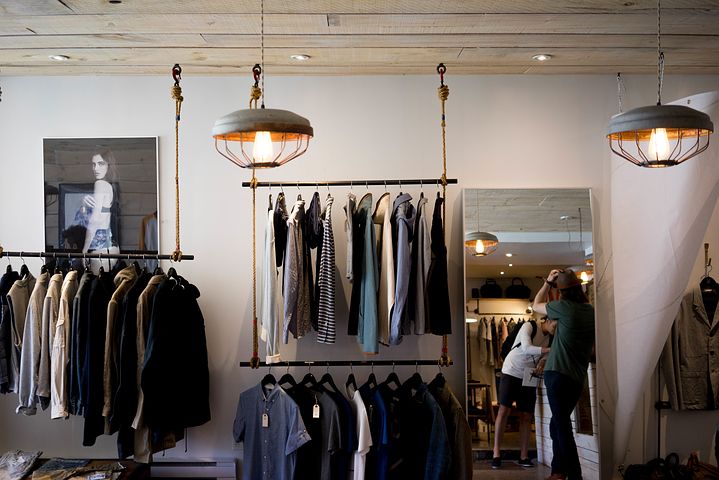Who stays in retailing and wholesale?
In relation to the upcoming much debated Black Friday and the counteraction “White Monday”[1] the retailing sector is in much focus. This text describes the individual and locational factors that increases or decreases the likelihood that an employee within the retailing and wholesale decides to quit and leave the firm.

That the retail and wholesale are important for the Swedish economy is hard to dispute. They employ a significant proportion of employees, approximately 500 000 individuals, and promotes the integration of immigrants and young people’s entry into the Swedish labor market. According to the Swedish Retail and Wholesale Council, one out of four currently employed in the Swedish labor market have begun their career in either the retail or the wholesale sector.The retail and wholesale industries thus provide an opportunity for many individuals to get employment, income, contacts and a social network. The project “Understanding career choices in retail and whole” conducted by four researchers at Center of Entrepreneurship and Spatial Economics (CEnSE) at Jönköping International Business School deals with these issues (https://www.retailresearch.se/).
The statistics from the Swedish Retail and Wholesale Council do also highlight one major problem that exist within these industries, they are coupled with high labor turnover. It is obvious that not all of the individuals that had their first job in these industries, stayed but many switched to jobs in other industries. The age distribution of employees in the industry shows the same tendency as both industries are characterized by a disproportionately high percentage of young individuals (especially women) and a lower proportion of people older than the average. In comparison with other industries, it is only the hospitality industry that has a more skewed age distribution. Recruiting and maintaining employees with the right skills and competences is thus one of the biggest challenges facing retail and wholesale firms regardless of their location.[2] From a societal point of view, labor turnover (or churn) is not always bad as a certain level of labor turnover ensures a renewal process of the human capital of firms as well as employees. However, when the turnover rates exceed the ideal level the induced costs are substantial for the industry and for the individual companies, as well as for the employees. Companies spend a lot of resources on recruiting and training new employees, an investment that does not yield any of the expected returns if the employees are prone to change workplace in a near future. For newly established firms and small businesses that have even less room for error recruitment, high labor turnover is even more problematic. From the perspective of the industry, the aggregate level of skills supply and how attractive the industry is as a workplace for competent staff. Given the rapid change taking place in retail and wholesale, because of advances in technology and competition from alternative channels such as e-commerce, competent personnel need both experience and knowledge of the industry.Employees with knowledge and experience in retail and wholesale can better identify and enable the changes that are required for the firm to maintain and, in the long term, also enhance its competitiveness.[3] Thus, the harsh competitive climate of recent decades has increased the importance of being able to maintain and build a competence base in the firm.
Labor turnover in retail and wholesale is a problem that has been noted by various agencies. Against this background, there is a great need for studies that focus on the industries skills’ supplied using up-to-date data. To this end, we use detailed register data which allow us to follow all individuals (above the age of 16) in Sweden over several years. We can access detailed information annually regarding their employment status, in which industry they are working, where they are working, and if they switch workplace and industry. By using this information, we can access their labor market status for different years. By selecting the individuals currently working in retail and wholesale we follow their career and observe if any change has occurred over two years (from 2014 to 2015). We run several statistical estimations where the outcome variable is defined if the employee has (i) quit their job, (ii) quit their job but continues working in the same sector, or (iii) quit their job and also change to another sector. Thus, we analyze the decision to weather stay within the same firm or to move to another firm, contrasting inter-firm and intra-firm mobility within retailing and wholesale.Results indicate that individual as well as firm characteristics relate to the decision of employees to either quit their current job. Location determinants seems to be of less importance. The findings show that individuals that quit their job in retailing and wholesale are younger, female, born in Sweden, lower firm tenure and industry tenure, and have a higher education.
Mikaela Backman
Center of Entrepreneurship and Spatial Economics (CEnSE), Jönköping International Business School, Jönköping, Sweden, Mikaela.backman@ju.se
Helena Nilsson
Center of Entrepreneurship and Spatial Economics (CEnSE), Jönköping International Business School, Jönköping, Sweden & HUI Research, Stockholm Sweden
Pia Nilssona
Center of Entrepreneurship and Spatial Economics (CEnSE), Jönköping International Business School, Jönköping, Sweden.
Özge Önera,c
Center of Entrepreneurship and Spatial Economics (CEnSE), Jönköping International Business School, Jönköping, Sweden & Cambridge University, Cambridge, UK.
[1]Where second-hand stores were open and argued for a more sustainable shopping.
[2]Booth, S., & Hamer, K. (2007). Labour turnover in the retail industry: Predicting the role of individual, organisational and environmental factors. International Journal of Retail & Distribution Management, 35(4), 289-307.
Broadbridge, A. (2002). Rationalising retail employment: a view from the outside looking in. International Journal of Retail & Distribution Managemen, 30(11), 536-543.
[3]Brush, C. G., & Chaganti, R. (1999). Businesses without glamour? an analysis of resources on performance by size and age in small service and retail firms. Journal of Business Venturing, 14(3), 233-257.
Detta är en bloggtext. Det är skribenten som står för åsikterna som förs fram i texten, inte Jönköping University.





